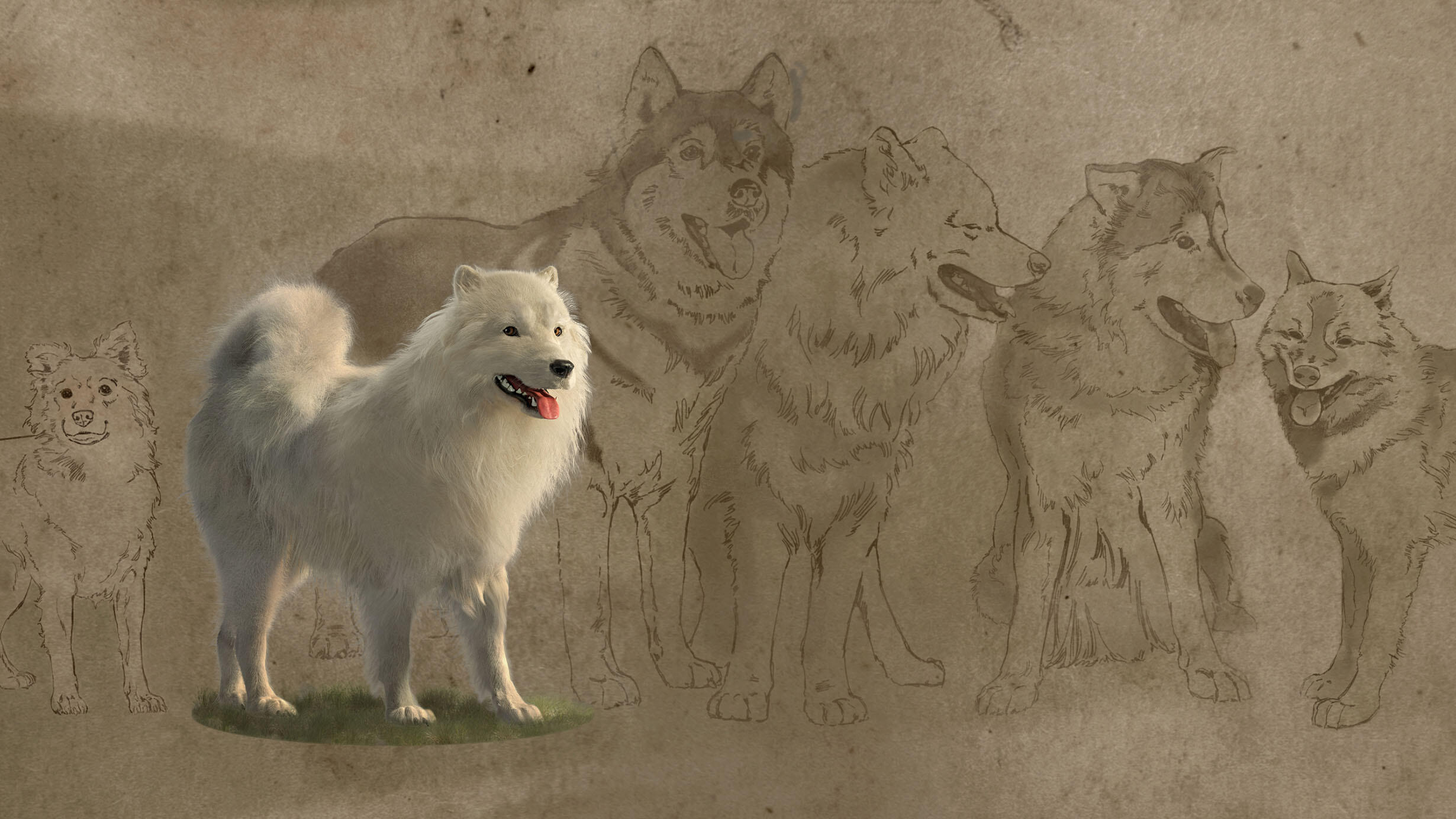Extinct Woolly Dog Analyzed in Collaborative Study with Coast Salish Co-authors
by AMNH on
 The reconstructed woolly dog shown at scale with Arctic dogs and spitz breeds in the background to compare scale and appearance.
The reconstructed woolly dog shown at scale with Arctic dogs and spitz breeds in the background to compare scale and appearance.© Karen Carr
Once a fixture of Indigenous Coast Salish communities in the Pacific Northwest, a now-extinct breed known as woolly dogs were prized for their thick undercoats and their spiritual significance. Breeding of the dogs was carefully managed for thousands of years, and they were often treated as beloved family members.
They were also sheared like sheep, with their wool used by Salish weavers in blankets and other items for ceremonial and spiritual purposes. But by the mid-19th century, this once-thriving dog wool-weaving tradition was in decline, as were the dogs themselves, which disappeared around the turn of the 20th century.
A new study sheds light on the ancestry and genetics of these culturally significant dogs based on the pelt of the only known woolly dog fleece in the world and interviews with Coast Salish co-authors.
The study, published today in the journal Science, was led by Audrey Lin, a Gerstner Postdoctoral Scholar in Bioinformatics and Computational Biology at the Museum, who conducted and led the work while on staff at the Smithsonian’s National Museum of Natural History.
In 2021, Lin learned that the Smithsonian’s collections contained the pelt of a woolly dog named “Mutton,” who died in 1859. After discovering there was little knowledge about the genetics of woolly dogs, Lin started a research project with Smithsonian anthropologist Logan Kistler and several Coast Salish community co-authors, including Elders, Knowledge Keepers, and Master Weavers, who provided crucial context about the role woolly dogs played in Coast Salish society.
With samples from Mutton’s pelt, Lin, Kistler and their colleagues sequenced the woolly dog genome and compared it with the genomes of ancient and modern breeds of dogs. They also identified chemical signatures called isotopes to determine the dog’s diet.
Their research finds that woolly dogs diverged from other breeds up to 5,000 years ago—a date that lines up with archaeological remains from the region. They also discovered that Mutton was genetically similar to pre-colonial dogs from Newfoundland and British Columbia. The researchers estimate that nearly 85 percent of Mutton’s ancestry can be linked to pre-colonial dogs. This ancient ancestry is surprising because Mutton lived decades after the introduction of European dog breeds, suggesting that Coast Salish communities maintained woolly dogs’ unique genetic makeup until right before the dogs went extinct.
© Smithsonian
In total, the team analyzed more than 11,000 different genes in Mutton’s genome to determine what gave woolly dogs their fluffy fleece and wool fibers that could be spun together to create yarn. They identified 28 genes that have links to hair growth and follicle regeneration. These included a gene that causes a woolly hair phenotype in humans, and another linked to curly hair in other dogs. Similar genes were even activated in the genomes of woolly mammoths.
But Mutton’s genetics could not tell researchers about what caused the dogs to decline. The authors suggest that it likely became increasingly difficult or forbidden for Coast Salish communities to maintain their woolly dogs after European settlers arrived, because of the introduction of diseases and colonial policies of cultural genocide, displacement, and forced assimilation.
“It was thousands of years of very careful maintenance, lost within a couple of generations,” Lin said.
But despite their disappearance, the memory of woolly dogs is still embedded into Coast Salish society.
“All of our communities held a certain aspect of knowledge about the woolly dog,” said Michael Pavel, an Elder from the Skokomish/Twana Coast Salish community in Washington, who remembers hearing about woolly dogs early in his childhood. “But when woven together, as a result of participating in this study, we now have a much more complete understanding.”